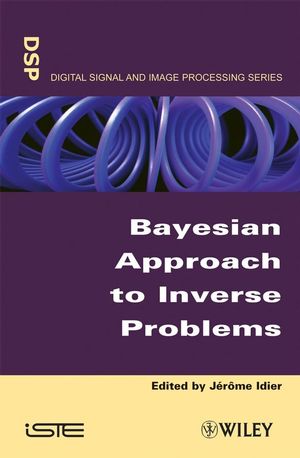Bayesian Approach to Inverse ProblemsISBN: 978-1-84821-032-5
Hardcover
392 pages
June 2008, Wiley-ISTE
 |
||||||
Many scientific, medical or engineering problems raise the issue of
recovering some physical quantities from indirect measurements; for
instance, detecting or quantifying flaws or cracks within a
material from acoustic or electromagnetic measurements at its
surface is an essential problem of non-destructive evaluation. The
concept of inverse problems precisely originates from the idea of
inverting the laws of physics to recover a quantity of interest
from measurable data.
Unfortunately, most inverse problems are ill-posed, which means that precise and stable solutions are not easy to devise. Regularization is the key concept to solve inverse problems.
The goal of this book is to deal with inverse problems and regularized solutions using the Bayesian statistical tools, with a particular view to signal and image estimation.
The first three chapters bring the theoretical notions that make it possible to cast inverse problems within a mathematical framework. The next three chapters address the fundamental inverse problem of deconvolution in a comprehensive manner. Chapters 7 and 8 deal with advanced statistical questions linked to image estimation. In the last five chapters, the main tools introduced in the previous chapters are put into a practical context in important applicative areas, such as astronomy or medical imaging.
Unfortunately, most inverse problems are ill-posed, which means that precise and stable solutions are not easy to devise. Regularization is the key concept to solve inverse problems.
The goal of this book is to deal with inverse problems and regularized solutions using the Bayesian statistical tools, with a particular view to signal and image estimation.
The first three chapters bring the theoretical notions that make it possible to cast inverse problems within a mathematical framework. The next three chapters address the fundamental inverse problem of deconvolution in a comprehensive manner. Chapters 7 and 8 deal with advanced statistical questions linked to image estimation. In the last five chapters, the main tools introduced in the previous chapters are put into a practical context in important applicative areas, such as astronomy or medical imaging.



